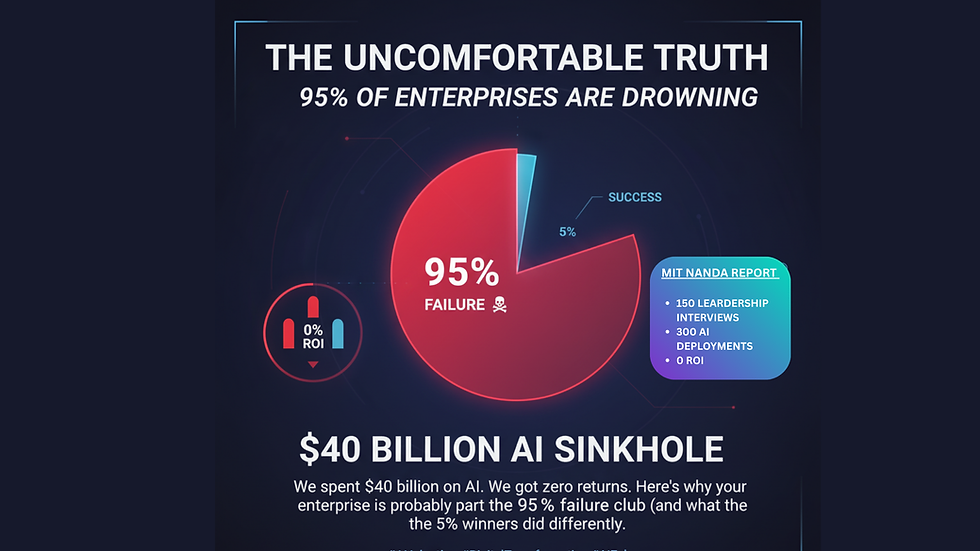Stop the Knowledge Drain: Build a Knowledge Base for peak Maintenance Efficiency
- parminder singh
- May 9, 2024
- 3 min read
Updated: Jun 26
In the exciting world of industrial maintenance and service, everyone's on a mission for excellence. Companies are always working to keep their operations running smoothly, with as little downtime as possible. And guess what? Artificial Intelligence (AI) is playing a huge role in making that happen. To address this knowledge gap, organizations must leverage AI to establish a comprehensive knowledge base. With the skilled personnel retiring or moving to new roles, valuable insights and expertise is being lost, potentially compromising peak maintenance efficiency. As the experienced technicians retire, they take with them years of accumulated knowledge. As maintenance procedures, troubleshooting techniques, and equipment specifications are dispersed across various sources and individuals within the organization, critical information becomes siloed and inaccessible to those who need it, and the issue arises of :
The Fragmentation of Knowledge
This lack of centralized access to critical information creates a domino effect of inefficiencies, hindering swift resolution of equipment malfunctions. While the traditional databases have propelled countless industries forward, their limitations become glaring when it comes to managing the ever expanding knowledge base required for modern maintenance operations, listed as follows:
Limited scalability: Traditional databases often struggle to cope up with the expanding volume of data inherent in complex maintenance operations. This constraint inhibits the seamless integration of new information, user manuals, or historical data sets, thereby impeding the database’s capacity to accommodate evolving needs of the organization.
Constrained Content diversity: Legacy data systems are primarily optimized for storing and retrieving textual data, failing to integrate multimedia content such as instructional videos, interactive guides, or visual appealing content- all integral to comprehensive maintenance knowledge base.
Structural rigidity: Heavily reliant on Structured Query Language (SQL), traditional databases require specialized expertise for data manipulation and navigation. The structural constraint hampers the agility and adaptability of the database, impeding its ability to accommodate evolving operational requirements and integrating with robust advanced technologies like artificial intelligence and advanced analytics.
The Role of Centralized Knowledge Base Repositories in Multi-Factory Environments

Knowledge Management Optimization: Serving as focal points for knowledge management initiatives, centralized repositories facilitate the systematic capture, categorization, and preservation of institutional knowledge by developing a knowledge base. By acting as a central hub for documents, manuals, protocols, and exemplary practices, organizations bolster their capabilities to distribute crucial information across departments and geographical regions.
Collaborative Synergy: A shared workspace is furnished where personnel can collaborate on documents, exchange information and ideate collectively. This collaborative synergy engenders an environment conducive to teamwork and knowledge exchange, ultimately enhancing decision-making and problem-solving acumen.
Improved Dissemination: By consolidating all the best maintenance practices into a single repository, creating centralized knowledge base, a ready access of relevant information to authorized users is ensured. They tend to apply standardized categorization and indexing systems, making it easier for the users to navigate and locate the information they need.
Authentication Mechanisms: It utilizes advanced encryption techniques to safeguard data integrity and confidentiality by implementing stringent controls. It streamlines user management by providing a central location to add, remove, and update user accounts, thus, simplifying the process of granting or revoking access for new employees or departing personnel.
Information Retrieval: They act as a well- organized library, with robust mechanisms holding maintenance related data like equipment troubleshooting, repair procedures, workflow modules and comprehensive maintenance task records. These repositories stand as bastions of knowledge within the organizations, curating and safeguarding maintenance and service related data to empower teams with resources and insights needed to excel in their roles.
ZippiAi’s Safety and Troubleshooting AI-engine X2 stands at the forefront of this revolution, offering a robust platform that understands the limitations associated with fragmentation of knowledge. Transitioning from traditional databases to AI-engine’s centralized Knowledge Base repositories marks a pivotal shift in how organizations manage and share troubleshooting knowledge across multiple factory locations.
Ready to adopt the new approach? The right time to start this change isn't tomorrow; it's today.
Schedule a demo to refine your workflows and embark on a journey towards productivity and streamlined operations.




Comments